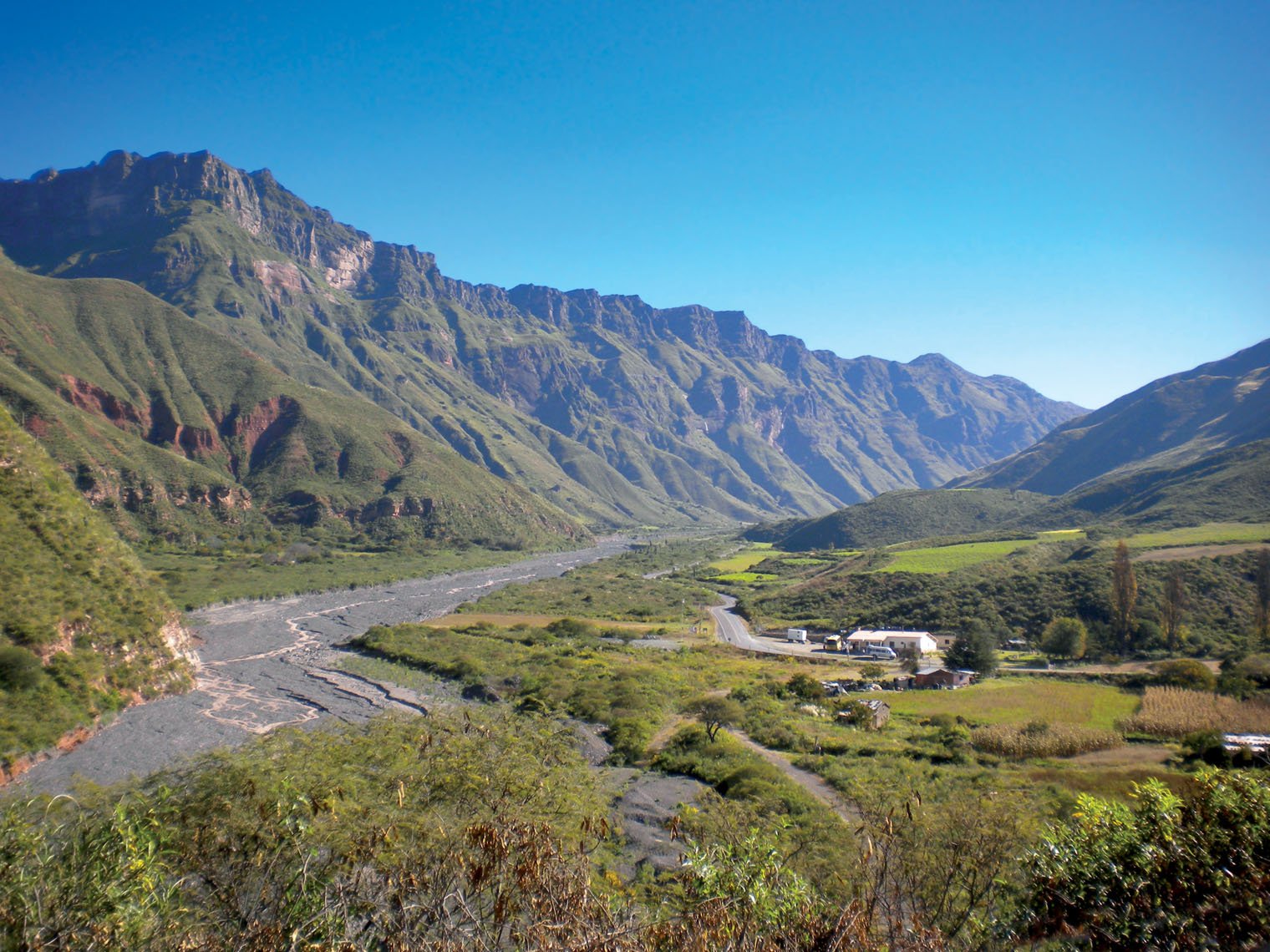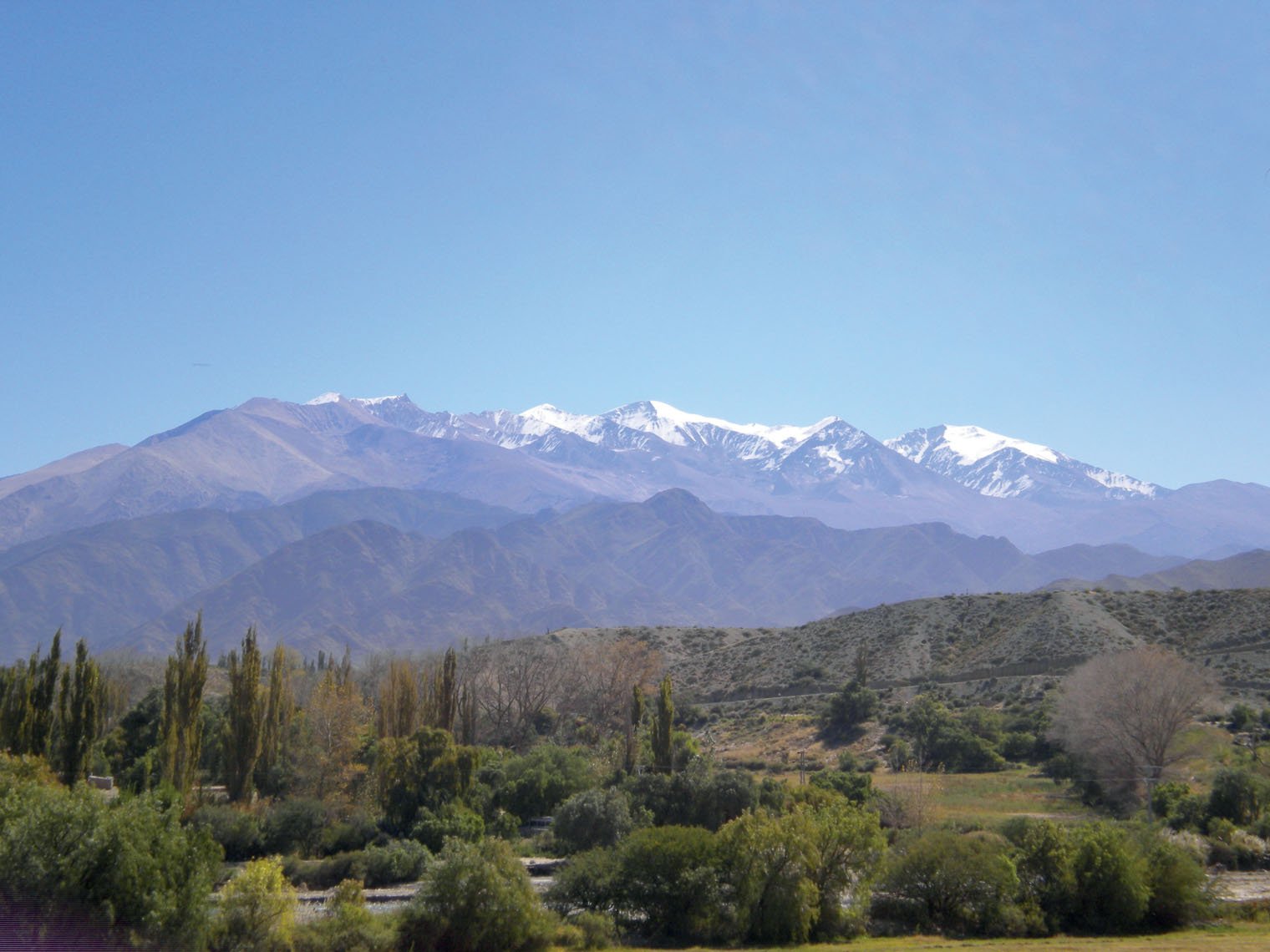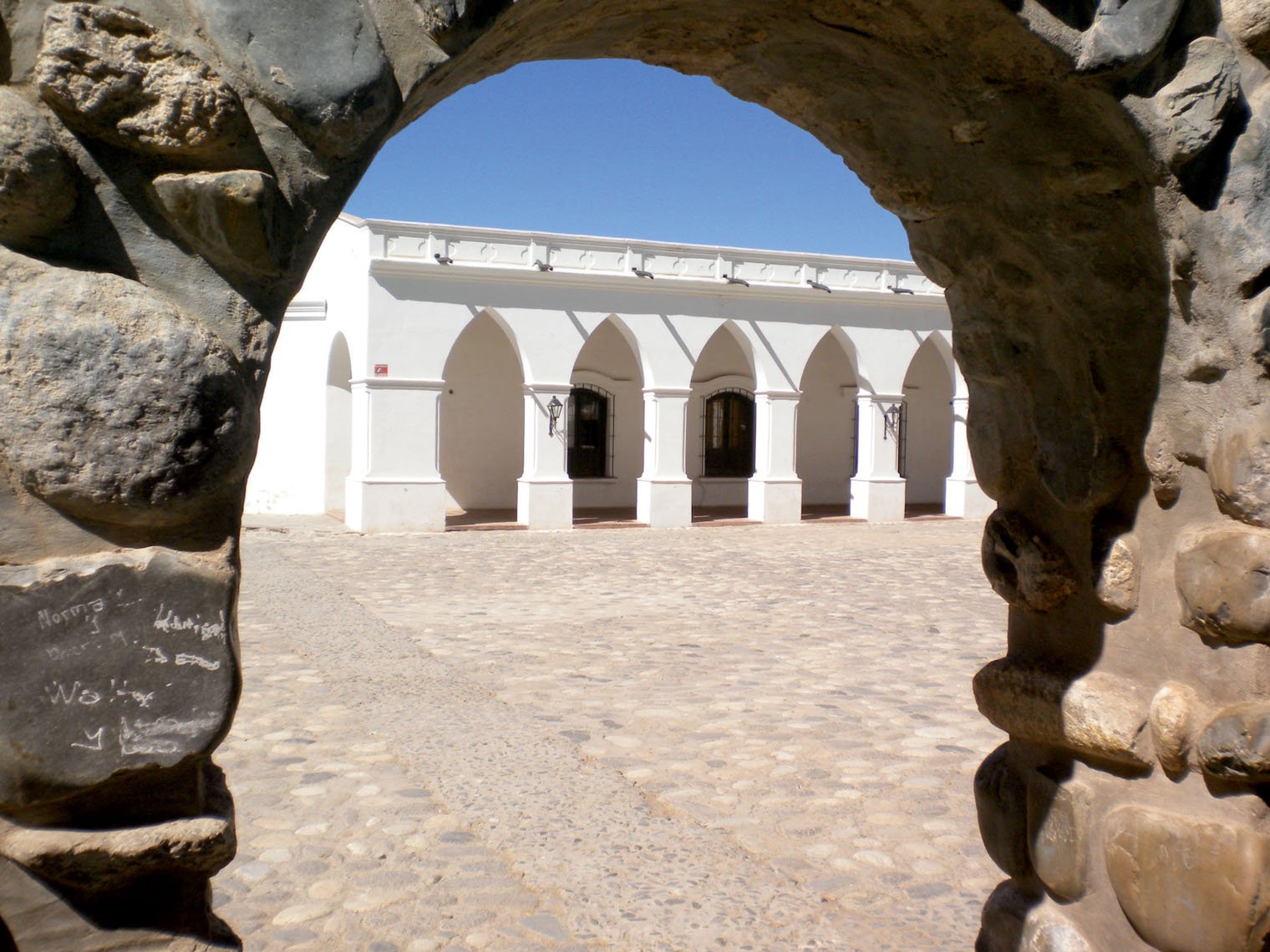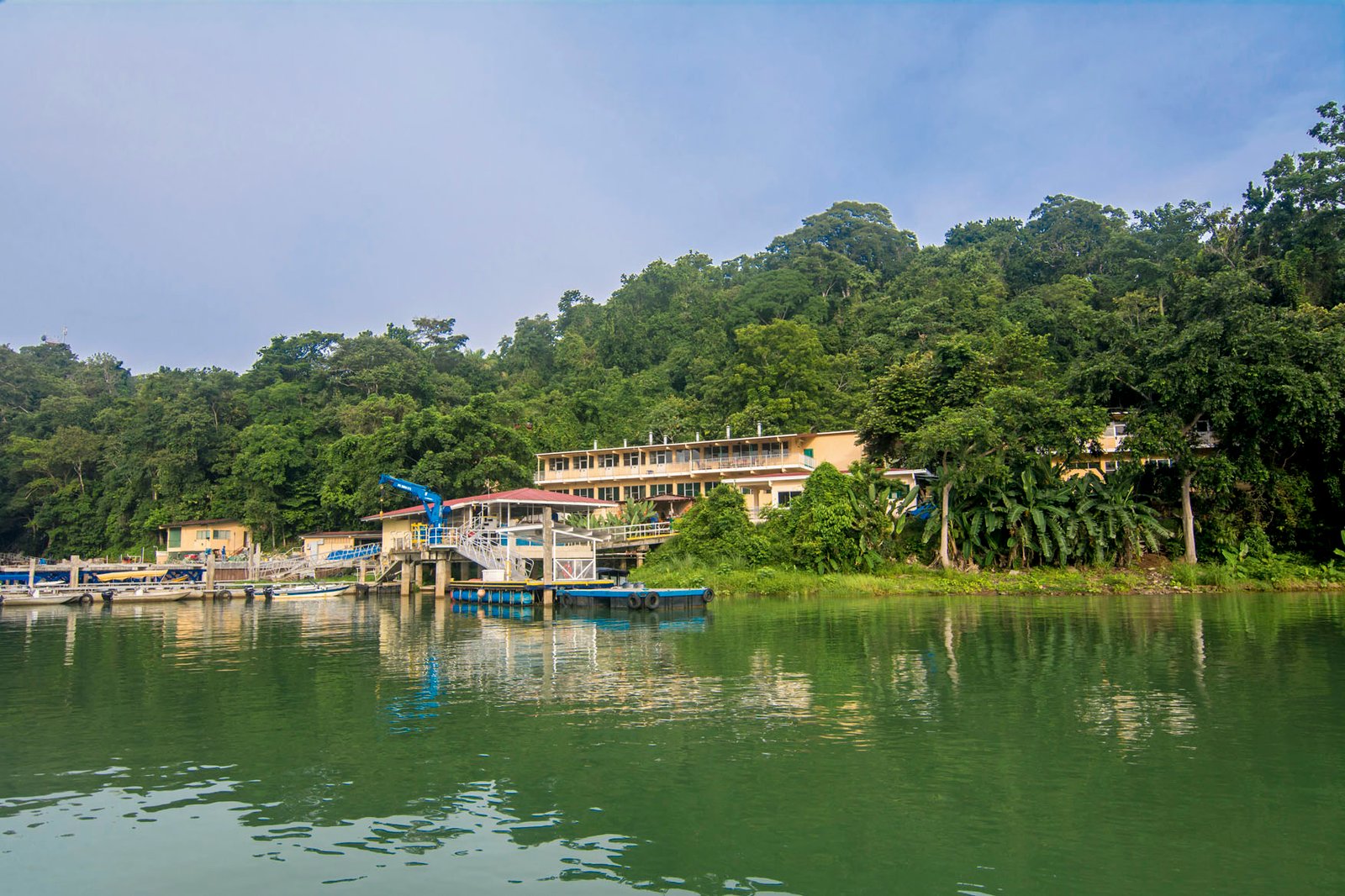
Cachi and the Calchaqui, Where the Soul Touches the Sky
Text and photos: Sebastián Córdoba
Northern Argentina is home to a tourist diamond in the rough that is now slowly becoming more refined in terms of both infrastructure and services, earning itself regional and international recognition in the process. No, I’m not talking about Quebrada de Humahuaca —which is already part of Argentina’s tourism circuit— but its close cultural cousin: the northern Calchaquí Valley with its star attraction, the glittering white town of Cachi.
We headed to Cachi to take a look at its well-known and recently-renovated attractions; we never imagined we would find a place whose charms and quietude were able to move the even the most experienced traveler.
Anyone wishing to travel on their own should rent a car at the Salta airport. Given my limited knowledge of cars, I chose a small and economical 2-door VW Golf. The car’s interior is rather cramped and spartan, but these defects are amply compensated for by the feeling the car gave me of being close to the ground, which is especially reassuring when navigating sharp curves at such a high altitude.

The journey starts out sky high, because the most direct road to Cachi requires a twelve-mile ascent up Cuesta del Obispo, climbing from 4,167 to 10,984 feet above sea level. At the bottom of the unpaved slope, I think my little car will not quite make it. Starting slowly and then gaining confidence, however, we begin making our way around the road’s innumerable curves, a feat often complicated by streams crossing the road.
It is best to allot a couple of hours for ascending the slope. Each curve brings into view craggy landscapes that deserve unhurried admiration. Most of the other tourists (European, U.S., Argentinean, and those from other Latin American countries) are as impressed by the landscape as we are. Despite the Babel of different tongues, nationalities blur in the peace of the limitless vistas. Gestured conversations are the order of the day as speakers of different languages jostle for the best position to take photographs.
The summit of the famous Piedra del Molino marks the start of our descent toward Cachi, along the well-known Tin Tin straightaway that stretches for nearly twelve miles. From that point on, the mountains become more rounded and the vegetation more sparse, but the overall picture is still one of rare beauty.
The harsh rays of the sun and the dazzling light induce a dream-like state, a feeling accentuated by our first view of a handful of cardon cacti; soon there are hundreds and then thousands of them along the roadside in the National Park. These odd, upright, and largely bare plants look like they could have been lifted from a Martian landscape.

The road to Cachi is a tourist attraction in itself because it is part of the fabled National Route 40, which runs the entire length of Argentina from south to north. To the north, the route seems to touch the heavens along the Abra del Acay pass, the highest in the world at 16,404 feet; hotels in the area offer visitors an excursion to the peak that can be undertaken only in an all-terrain vehicle.
Salt Mountain
According to various interpretations, Cachi means “salt town” or “white town.” The ancient Calchaquí inhabitants thought they saw a blanket of salt covering the town’s rocky guardian, the peak of Nevado de Cachi. This looming, omnipresent, 20,932-foot tall mountain was first climbed in 1950.
There are two pieces of good news for today’s travelers. First, service and hotel options in the town have multiplied since Panorama of the Americas last visited in 2003. There are now several boutique hotels featuring décor that blends indigenous and colonial influences in the rooms and public spaces. I, for one, heartily welcome this transformation. The uncomfortable beds, scanty breakfasts of bread and coffee, and the unmarked paths typical of my boyhood trips to northern Argentina are now firmly in the past, at least as far as Cachi is concerned.
Second, unlike in other towns in the area, local authorities and community leaders have managed to reign in any excesses of visual pollution, leaving the town›s lovely, straight sight lines unchanged. Looking around, you expect to hear «Action!» on what seems like a Hollywood set plunked down in the valley.

The tranquil beauty of the town of Cachi is still the main draw for visitors. A church and tree-lined plaza are components of any northern Argentinean town; in Cachi, the interior of the 16th century church features porous cardon wood. After several hours of intense sunshine under a cloudless sky, a welcome dimness envelops us inside the church and helps elevate our thoughts and connect with a colonial past that created the beams, images, and altars around us.
For visitors wishing to learn more about the area’s history, the Cachi Archeological Museum, which is an interesting architectural companion to the church, houses more than 5,000 pieces spanning 10,000 years. This plaza also hosts artisans who offer their own creations in silver, textiles, and cardon wood. At a small stand, I succumb to the incredible softness of the woven fabrics and happily acquire two alpaca wool jackets at a very good price
Excursions
Excursions around Cachi offer an embarrassment of riches in terms of beautiful sights, from the smallest to the most majestic. A few blocks from the main plaza, the Calchaquí River invites us to stop, take photos, and listen to the melody it plays against the silence of the mountains. Eighteen miles away in Seclantás, we are amazed by the work of artisans who weave extraordinarily high-quality ponchos. We also visit the ancient church dedicated to the Virgen del Carmen.
Following Route 40 through these towns, we can appreciate the full magnificence of the Calchaquí Valley, guarded by the snowy peak visible from miles away. During these contemplative moments on the road, a timeless tranquility prevails and we feel our souls expand.
In the opposite direction, La Poma —a hamlet even smaller than Cachi— sits at 9,892 feet above sea level. It is well worth the thirty-eight mile journey on extremely poor roads. An interesting thing about La Poma is that it was destroyed by an earthquake in 1930; both the old and new sections were reconstructed and are now open to visitors.

But Cachi also boasts more spirited attractions. We go in search of them at the Colomé winery (founded in 1831), the oldest in the Argentina. The idyllic surroundings provide a perfect venue for sampling wines, including the star of Argentinean white wines: the renowned Torrontés, from the magnificent terroir 7,218 feet above sea level in the Calchaquí Valley. There, my preference for Chardonnay goes right out window as soon as I taste this intense wine that features just the right measure of sweetness and refreshes the palate even alongside grilled red meat.
The Cachi Adentro (Inner Cachi) circuit features small waterfalls, ranches, archeological sites and amazing views of the mountains surrounding the peak of Nevado de Cachi. Our simple vehicle seems to be comfortable on any surface, even with all the gravel roads, encouraging us to continue exploring.
Where to Eat and Sleep
The grande dame of hotels is the La Merced del Alto on the outskirts of Cachi. This modern building that resembles a colonial convent provides a setting where visitors can experience a different rhythm of life in the lap of luxury.
Less sumptuous but also lovely, El Cortijo is a recently built hotel with décor that incorporates a palette of colors characteristic of the area.
The Cachi area’s gastronomic virtuoso is the new restaurant “Viracocha,” which specializes in Andean and vegetarian cuisine. A simpler option with equally delicious food is the traditional El Zapallo, featuring expertly grilled goat and other meats.Some widely-traveled people say that Cachi is definitely “the place to be,” a place that feels like home but is also in close harmony with the universe. I fell for this delightful town instantly: its people, its silence, its magnificent landscapes, its brightness, its flavors, and its scents. Even my indefatigable four-wheeled friend seems to emit a nostalgic whine when the engine starts to take us back down Cuesta del Obispo.



